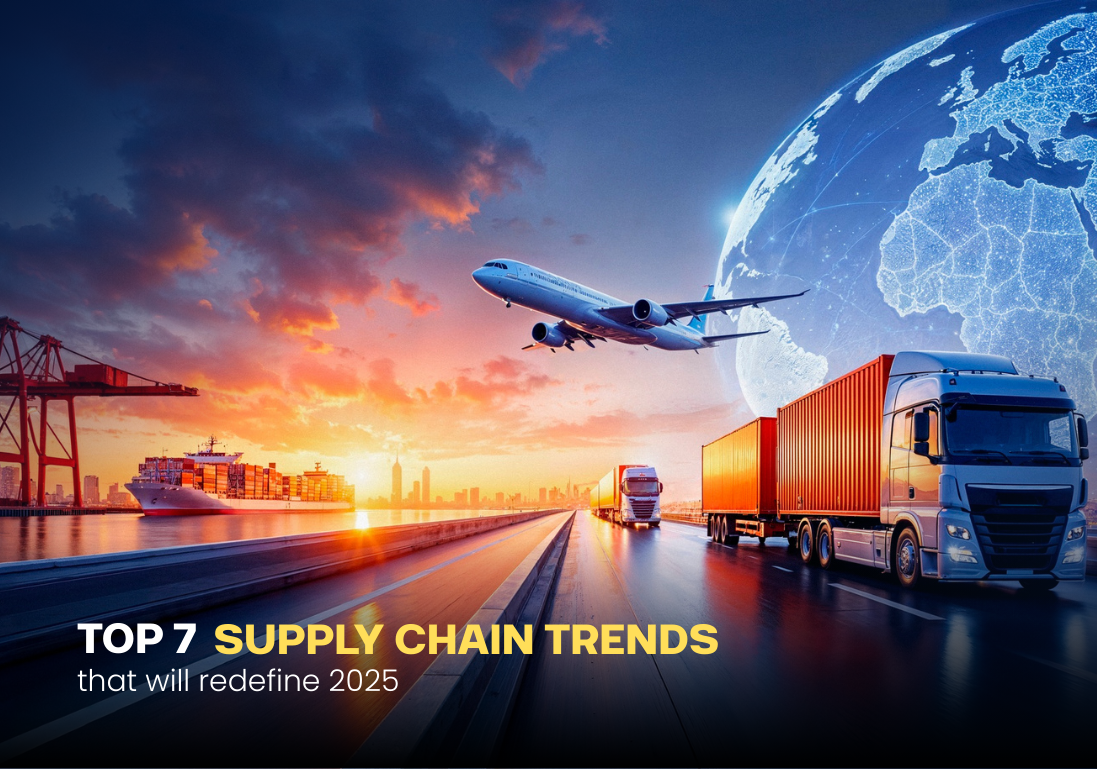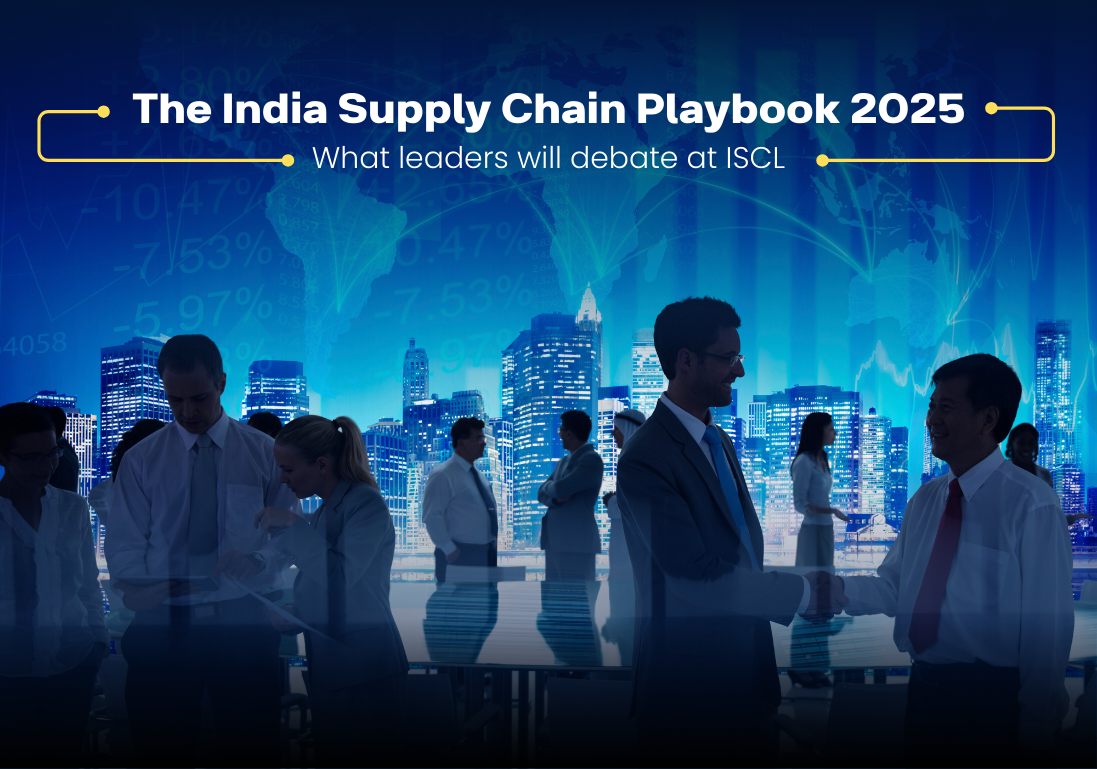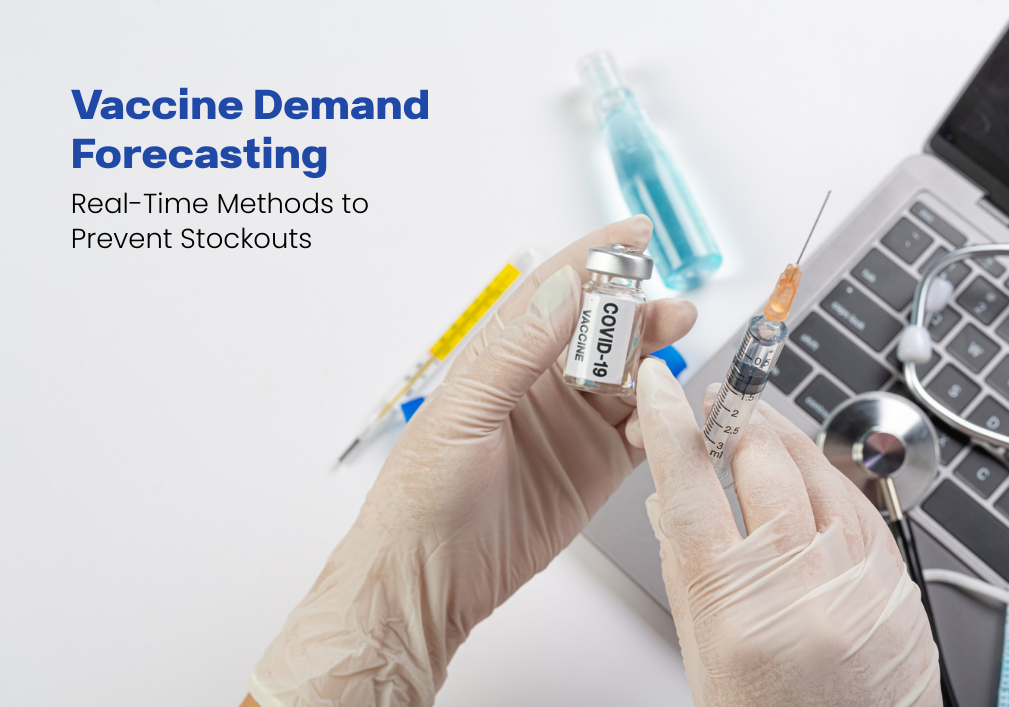Until recently, supply chain operations largely remained behind the scenes, ensuring products moved efficiently without drawing much attention. However, the landscape has transformed dramatically. Global disruptions—ranging from pandemics to geopolitical uncertainties—combined with rising customer expectations for speed and reliability, have placed supply chains at the center of business strategy. In 2025, the supply chain is no longer a supporting function; it has become a strategic driver of competitiveness, trust, and sustainable growth. The following perspectives highlight how the discipline is evolving and what these changes mean for businesses in practice.
7 Supply Chain and Logistics Trends in 2025
1) AI and machine learning become part of the day job
AI is no longer a pilot or a side project. It sits in the control tower, making sense of messy data—sales history, promotions, weather, lead times—and turning it into forecasts people can actually plan around. The real step-change isn’t prediction alone, but recommendations. If a storm threatens a lane, the system doesn’t just warn you; it proposes a better route and nudges production to match. Planners spend less time wrestling spreadsheets and more time handling exceptions. The best results come from starting with one high‑impact use case, measuring decision quality, and keeping humans in the loop so teams trust the outputs. AI-driven logistics or supply chain planning services.
2) Customer‑in networks replace product‑out thinking
Same‑day and two‑hour delivery have reset expectations. That reality is reshaping networks: big regional distribution centers are being complemented by smaller, closer nodes—urban hubs, micro‑fulfillment, and smart use of store back rooms. The goal is simple: bring inventory closer to demand and make delivery feel reliable and personal. The companies that get this right use their own order patterns to decide where smaller nodes actually pay off, give customers meaningful delivery choices at checkout, and align promises with inventory to avoid phantom availability.
3) Resilience—and even anti‑fragility—takes center stage
“Just‑in‑time” was brilliant until volatility exposed its weak points. The new playbook blends efficiency with insurance: diversify suppliers and lanes, hold a small, targeted buffer of critical parts, and treat every disruption as a lesson that improves the next response. Mapping true single points of failure—including tier‑2 and tier‑3 suppliers—often changes priorities overnight. When leaders price the cost of redundancy against the cost of downtime, the economics of resilience get clearer. Regular “fire drills” for port closures, carrier strikes, or sudden demand spikes harden the system before the next shock.
4) Sustainability moves into operations, not just reports
Sustainability is becoming operational and financial, not ornamental. Route optimization, better cube utilization, and smarter modal choices reduce emissions and cost at the same time. Circular models—repair, refurbish, and reverse logistics—extend product life and earn customer loyalty. ESG isn’t a marketing line; it’s a requirement from customers and regulators. Progress accelerates when teams set a carbon budget for lanes just like a cost budget, pilot refurb flows in a single category, and power facilities with renewables where incentives make the ROI work.
5) Digital twins make visibility actionable
A digital twin gives you a living model of the network: inventory in motion and at rest, where it is, where it’s late, and what it will affect downstream. It also lets teams “sandbox” scenarios—what if this port shuts? what if demand jumps 20%?—and compare options before making a move. The trick is to start small, with a minimum viable twin for one region or product family, feed it with carrier, WMS, and IoT data, and connect alerts to playbooks so insights trigger actions instead of adding another dashboard.
6) Blockchain earns its keep where trust is non‑negotiable
Beyond the hype, blockchain proves its value in chain‑of‑custody for products where integrity matters: pharmaceuticals, luxury goods, aerospace parts, and food safety. A tamper‑resistant record reduces counterfeits and simplifies audits. The smart path is to begin with a single high‑value line and a small circle of suppliers, integrate with existing systems, and expand as value is proven.
7) The human edge grows, not shrinks
As automation picks up the repetitive work, people focus on judgment, trade‑offs, and communication. Logistics consulting services and planners who can interpret AI signals and make confident, cross‑functional decisions become force multipliers. Frontline roles evolve toward managing robots, resolving exceptions, and improving service quality. Continuous learning becomes part of the workflow, not a one‑off course. Organizations that build role‑based learning paths and celebrate human overrides that improve outcomes see faster adoption and better results.
The Bottom Line
These shifts aren’t theoretical. They’re already paying off for teams that start small, learn quickly, and scale what works. In 2025, the winners will invest in both the stack and the skills, balance speed with resilience, and design from the customer backward. If you share your industry or region, I can tailor this with sector‑specific examples and a set of pragmatic quick wins.
FAQs
- How is AI different from what companies are already doing with data analytics?
AI goes beyond historical analysis to provide predictive and prescriptive recommendations. Instead of just showing you what happened, it suggests what to do next based on complex data patterns. - What’s the difference between resilience and “anti-fragility”?
Resilience is about withstanding a shock and returning to the original state. Anti-fragility is a step further—it means a system not only survives but actually improves and becomes stronger as a result of the disruption. - Are these trends only for big corporations with large budgets?
No, many of these trends can be started small. For example, a small business can begin by optimizing a single delivery route or piloting a digital twin for one product line to demonstrate value before scaling. - How does a “customer-in” network differ from a traditional one?
A traditional “product-out” network moves goods from production to a few large distribution centers. A “customer-in” network is designed backward from the customer’s location, using a web of smaller nodes to ensure faster, more personalized delivery. - Is blockchain a viable solution for every supply chain?
No, blockchain is best suited for scenarios where trust and transparency are critical and the value of the product is high enough to justify the investment. It’s not a one-size-fits-all solution for every supply chain problem.




